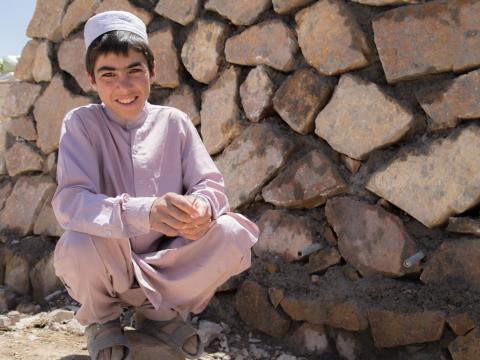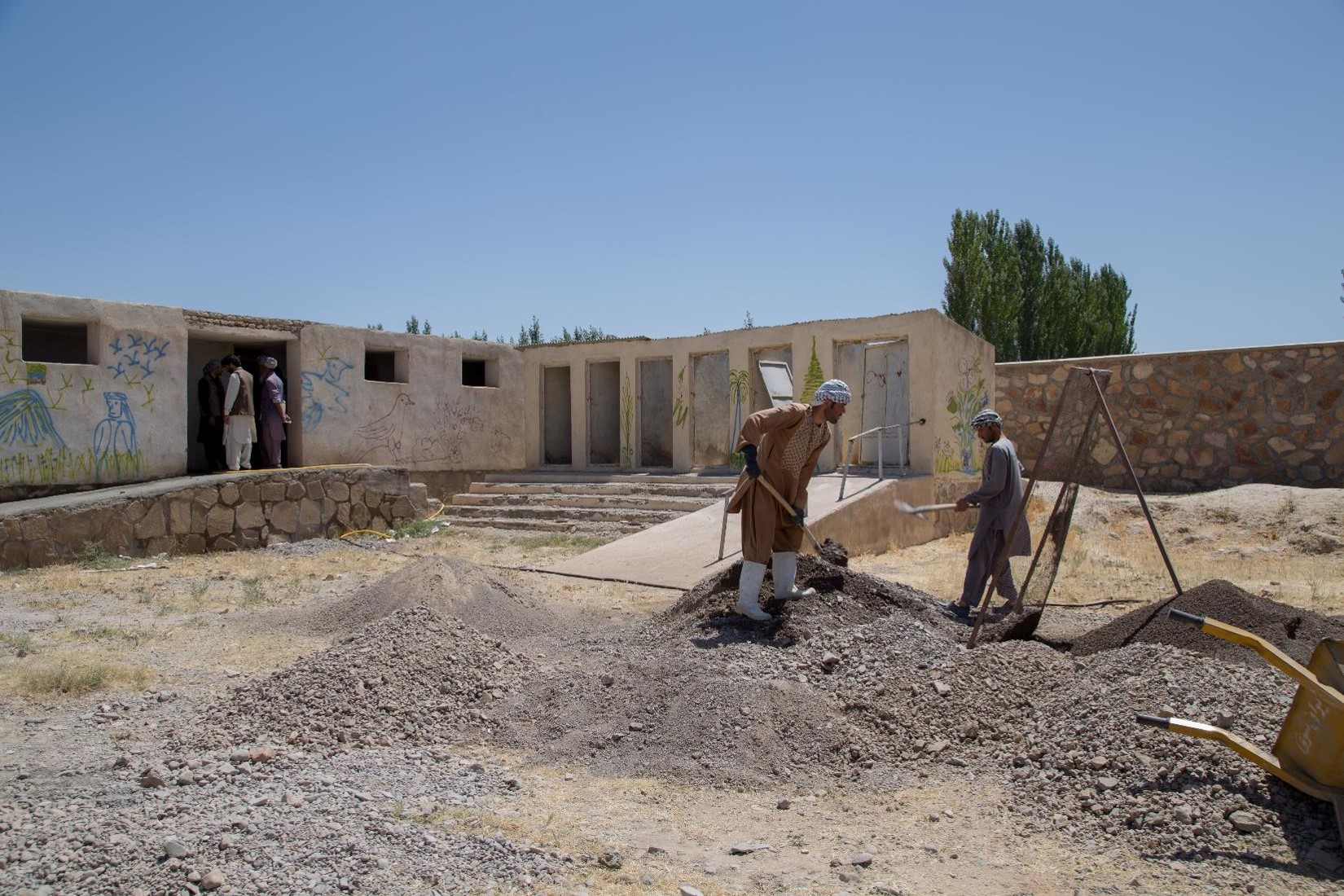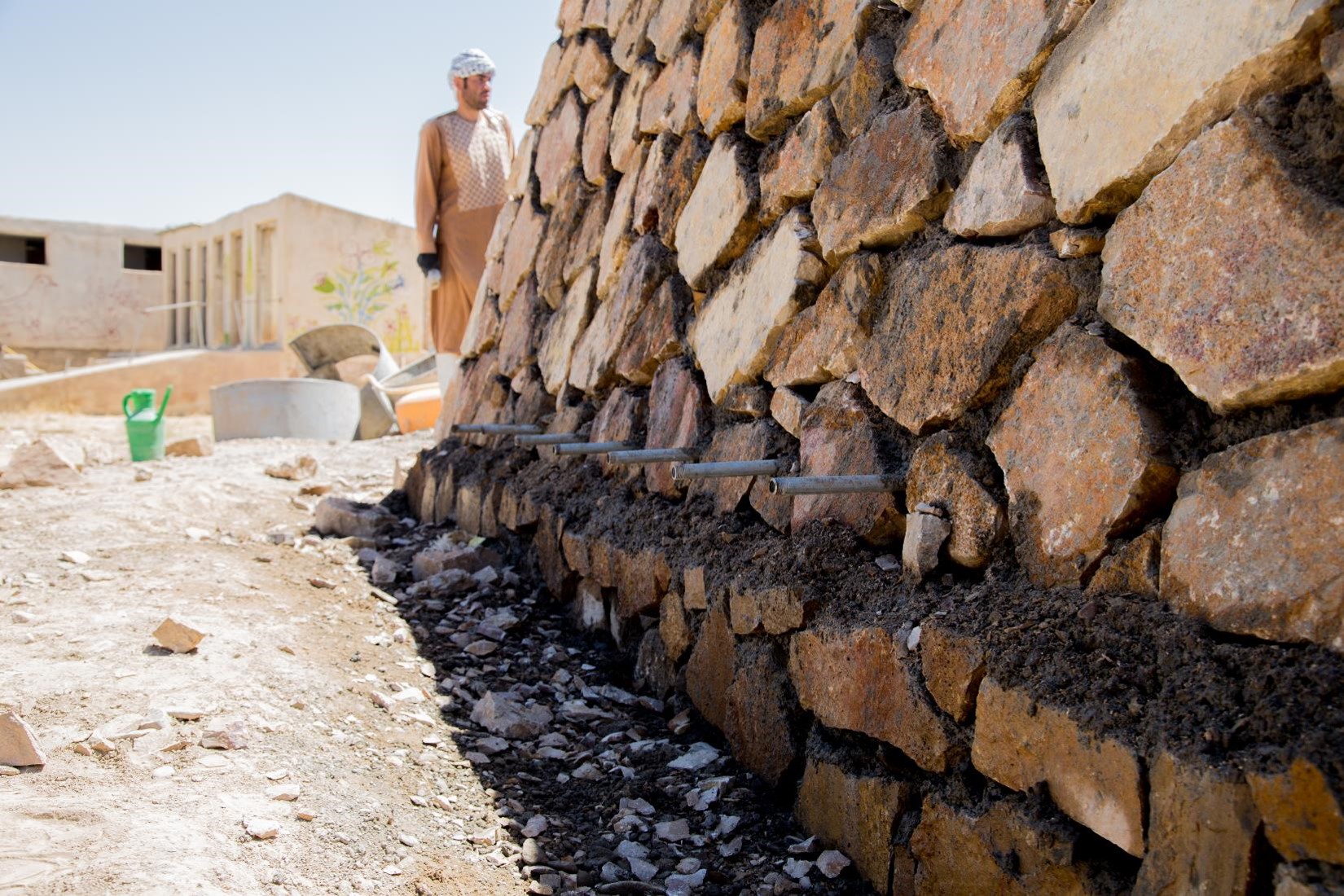New toilets and water sources surprise students

The problem with toilets
Of the 12 latrines only six latrines are usable in each two schools and the rest are not functional. The roof leaks when it is raining and snowing. The toilets’ doors are not locked and some of them don’t even have a door, which means no privacy for students.
The students had to use pit latrines with dirt floor. These are highly unhygienic, poorly maintained and could not be washed as the floor had been covered by mud.
Mariza one of the girls in grade 10 has come to school to ask about her exam score today. She says “I don’t usually use the toilet in our school. I feel I get dirty when I have to use it. It is very smelly with lots of flies inside. I withhold myself until I go home. I remember one day, I had to use the toilet. I closed my eyes not to see the dirt and held my nose and mouth not to smell anything. It was really bad.”
Moreover, none of the schools have latrines that are usable for people with mobility issues. Students with disability couldn’t use the stairs and there were no handrails for support to either the floor or sidewalls.
“We have two disabled students in our schools who are paralysed due to polio. It is difficult for them to use the toilet in school as they can’t use the stairs.” says Jomakhan, the school principle of the Langar high school.
The problem with water
In these two high schools with more than 2,000 students, the main and single source of drinking water was a borehole with hand pumps. However, water was not available in all seasons and had never been tested or treated. Based on the recent assessment done by World Vision, none of the schools fulfilled the Sphere standard of having at least three litres of water per pupil per day for drinking and hand washing.
Joman Khan says “Children have to wait in queues to drink water from the well. One of the children pumps and the other ones drink. Those who couldn’t drink water in the break time, get permission to drink during the class.”
The school principle states that students spend four hours in school and as they are very young, their body is exposed to a variety of health related issues such as diarrhoea, constipation and infections. “We are responsible for the health of our students. If we don’t have clean and functional toilets in school and if there isn’t clean drinking water for children, their health is at risk and they may struggle with diseases for a long time.” Joma Khan explains.
Equipped schools
Addressing the challenges, through funds from World Vision US, World Vision Afghanistan integrated WASH activities within the Area Integrated Programme funded by World Vision Hong Kong and Korea to increase hygiene and sanitation facilities and practices in schools and health facilities.
According to WASH Engineer Ahmad Seyar Haqmal “We are rehabilitating toilets in these two schools and expect to finish by late August. Each school will have 12 usable latrines with full privacy where the doors can be locked from inside.”
Understanding the concerns of students with disabilities, one of the toilets is being built particularly for disabled students with a wider door and other facilities to help their movement.
To ensure students drink clean drinking water, the project staff are also rehabilitating the wells within the schools and establishing water reserves with seven taps. The quality of the water will be tested to confirm that the water is free of any germs and chemical materials.
Joma khan adds “Children are often running around, playing sports during the break time – I am sure the new water sources will encourage them to drink enough clean water.”
Promoting a healthy lifestyle, the teachers and students will also be educated about the importance of critical sanitation and hygiene practices such as hand washing and keeping the environment clean.

